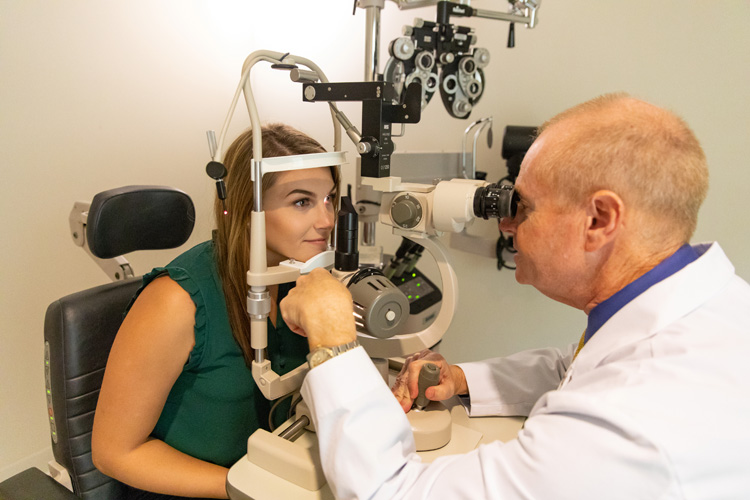
People tend to think of eyelid surgery as purely cosmetic, but it often has an important medical purpose because those drooping eyelids can dramatically diminish a patient’s field of vision.
The procedure physicians like New Vision Eye Center ophthalmological surgeon Dr. David O’Brien use to fix the problem is called blepharoplasty – and Medicare pays for it if it’s deemed medically necessary.
“Blepharoplasty,” says the Mayo Clinic, “is a type of surgery that repairs droopy eyelids and may involve removing excess skin, muscle and fat. As you age, your eyelids stretch and the muscles supporting them weaken. As a result, excess fat may gather above and below your eyelids, causing sagging eyebrows, droopy upper lids and bags under your eyes.”
“I really enjoy doing these [procedures] because they’re different from my Lasik practice. That’s very tech-driven. This is a very different type of procedure.”
“Lasik,” O’Brien continues, “is using the laser. It’s very quick. It’s very automated.” With blepharoplasty, “there’s much more of an art to it.”
That artistry helps his patients see better – and makes them look younger, too.
“There’s always a cosmetic component [to a blepharoplasty],” says O’Brien. “Because there are no patients who say, I want you to fix my vision by doing eyelid surgery but I don’t want to look better.”
“Every ophthalmic resident gets trained as an oculoplastic surgeon,” O’Brien explains. “We all do lid surgery in our training. Some people choose to do a fellowship in oculoplastic surgery, and in my training, I did six months of that in addition to my corneal fellowship. I always enjoyed lid surgery, so I went and pursued that.”
“I was very blessed to have a gentleman who’s a very well-known oculoplastic surgeon in Baltimore, Md., who has a home here in Orchid – Dr. Marco Doxanas – come here and for a year, he sat by my side and we did blepharoplasty cases together. So I had a kind of second fellowship with him, which was unofficial, but it’s the best kind of training you can have.”
It is training he uses daily to help his patients.
“My typical patient,” O’Brien says changing gears “is not the 40-year-old who wants to try to regain the 25-year-old look. My typical patient is an older patient.”
Of course, whatever your age, if you’re the kind of person who feels queasy at the thought of someone wielding a scalpel or surgical scissors anywhere near your eyeballs – relax. Odds are you’ll be sound asleep during a New Vision blepharoplasty.
“I prefer to do these procedures with IV sedation in our operating room,” says O’Brien. “In our surgery center, we have full control of the patient’s level of comfort and have access to their intravenous state if there are any problems with blood pressure or heart rate. [That’s important] because a lot of the patients I operate on are older and they have very dramatic drooping of their upper eyelid skin.”
If patients are of a certain age, they may be taking medications that will have to be temporarily put on hold. For folks taking a daily aspirin, that’s likely to be 10 days prior to surgery, and “for Coumadin, it’s typically three to five days, depending on what their cardiologist says.”
Non-prescription supplements, including flaxseed oil and fish oil, also should be stopped before surgery.
And the cost?
“The fees that we charge for a cosmetic lid surgery are the national average of $3,500.” O’Brien says. “The fee that’s billed to Medicare is roughly the same. However, there needs to be a demonstrated amount of vision loss with a peripheral vision test,” before Medicare will pick up its share.
There will be some bruising for about a week after surgery and patients will need to come back in 10 days to have stitches removed, but O’Brien says “patients don’t have a lot of pain. This is typically not a painful procedure.”
The better vision and more youthful appearance, he adds, can last up to 10 years.
Dr. David O’Brien is with New Vision Eye Center at 1055 37th Place in Vero Beach, directly across from the hospital. The phone number is 772-257-8700.



